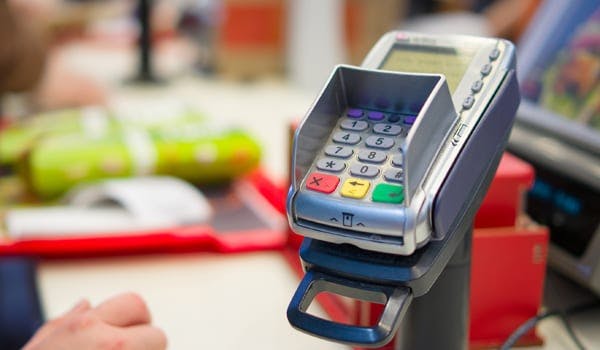Heads up Aussie retailers: beginning 1 August 2014, the PIN will be the main form of card payment authorisation in Australia.
This means that your customers will no longer be able to use their signature to verify or authorise credit, charge, and debit card transactions at point-of-sale.
The date is fast approaching, so if you haven’t done so yet, here are some tips to help educate yourself about this upcoming change and prepare your customers.
Why ditch the pen for a PIN?
This change is being championed by PINwise – an initiative of the Australian payments card industry to encourage the use of PIN instead of signature. The Industry Security Initiative (ISI) comprises representatives of all Australian financial institutions that issue Visa, MasterCard, American Express and Diners Club cards.
PINs for credit and debit card purchases at point-of-sale are safer and faster than signing. There is only a one in ten thousand chance of someone guessing your PIN.
Starting with some of nation’s largest retailers, the move will gradually see all of Australia’s 800,000 merchant payment terminals undergo a software update to no longer accept signature as the main form of card authorisation. For most, these costs will be covered by the terminal’s provider.
There will be no change to contactless or online transactions and only in some circumstances such as when using a card issued from a bank overseas, will signature still be a valid form of verification.
Will the new rules apply to all transactions?
No, there are some exceptions to the PIN requirement, including:
- Contactless transactions (Visa payWave, MasterCard PayPass or American Express Contactless) under $100
- Certain transactions under $35
- Transactions from most unattended terminals like vending machines, parking meters, and kiosks
- Transactions by customers whose cards are issued by banks outside Australia (e.g tourists)
- Transactions from payment cards that don’t have a chip
- Transactions from signature only cards (for people granted special needs)
How can you prepare your customers?
The use of PINs is already widespread in Australia, but you should still take the steps to ensure that your customers are aware that signature authorisation is on its way out. One of the best ways to do this is to train your staff to promote the PIN.
Currently, a lot of merchants ask customers to “PIN or sign” at checkout. With the big change right around the corner, it’s best to tell cashiers to emphasise PINs over signatures.
The PINwise website provides free promotional and educational materials for download. Click here to get your hands on PINwise artwork, posters, flyers, counter wobblers, and tent cards for your store.
Will I lose the sale if the customer enters the wrong pin?
If a customer types in the wrong PIN three times into the point-of-sale terminal, their card may become locked. You should tell the customer to contact their bank or financial institution to obtain instructions on how to unlock their card. In some cases the customer will be asked to go to their bank’s branch or ATM to unlock the card.
You will need to offer the customer other options to complete the purchase using a different payment method, either a different card, cash, or check.
What are the opportunities?
This is an opportunity for retailers who are running older infrastructure to update to modern systems such as cloud-based point-of-sale. It’s not just a chance to transform how you process payments but how you run your entire retail business.
It may also be an exciting time to consider moving your business to a fully digital platform and start issuing email receipts and offering digital loyalty as well.
About the Author
Vaughan Rowsell is the CEO and Founder of Vend.

